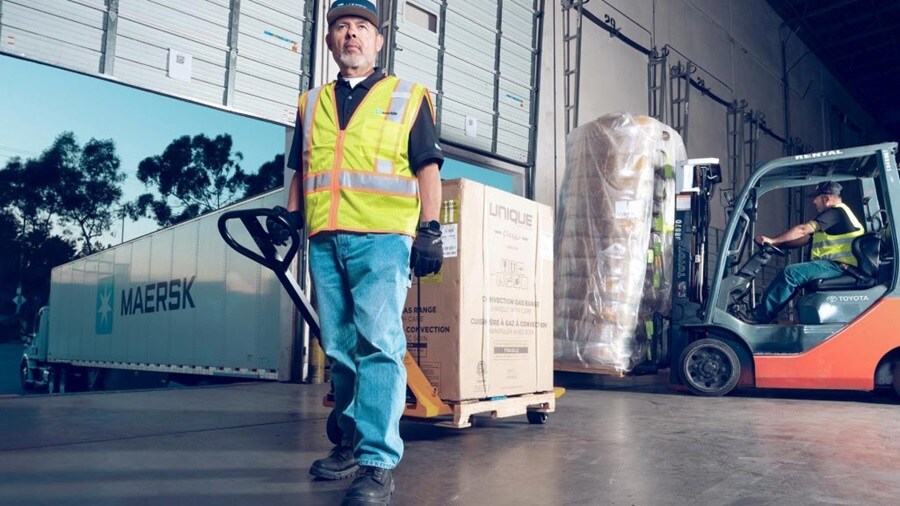At first glance, Q1 2025 looked stable. Ground freight volumes inched upwards. Industrial production saw modest gains. And for a brief moment, the market exhaled, appearing to settle.
But in freight, stillness often signals compression, not calm. And those who’ve weathered enough cycles know: freight markets don’t always shout before they shift.
Beneath the early-year calm, stress signals are already surfacing.
The US GDP contracted by 0.2% in Q1 2025, marking the first economic decline in three years. Market sentiment is weakening as the Purchasing Managers’ Index (PMI) is hovering just above contraction territory. Meanwhile, an unpredictable policy environment and tariff tensions are distorting demand flows, pushing shippers to act preemptively.
The recent demand surge in the spot market isn’t necessarily a sign of lasting growth. More likely, it reflects a short-term spike driven by reactive shipping decisions — and a broader shift away from contract commitments as shippers hedge against market swings.
And while customers have chosen a wait-and-see approach amid political and economic uncertainty, smart shippers aren’t waiting for volatility to make itself obvious. They’ve seen this cycle before: soft macro indicators, strong reactive moves, and sudden rate pressure. They’re reading the signals, anticipating market shifts, and adjusting their freight strategies before lead times, capacity, and costs do it for them.
Here’s what the ground reality looks like and what it means for your logistics strategy.
Demand: Rising movement, fragile momentum

Q1 demand held steady, driven by softening contract load volumes and increased reliance on the spot market.
The Cass Freight Index has posted three straight months of growth, and overall shipment activity remains relatively healthy. But it’s important to read beyond the topline.
- A growing share of that shipment volume is moving through the spot market, not contracts-indicating reactive, not resilient, demand.
- Contract load volumes have declined for seven consecutive months—a clear sign that shippers are losing confidence in the demand stability. They’re pulling back from long-term commitments in favor of lane-specific, short-term spot moves.
- This isn’t demand driven by growth. It’s a reactive market pricing in caution and compressing margins as a response against sudden tariff announcements, cross-border order reshuffles, and inventory realignment.
And even where demand exists, it’s highly variable. Key import categories dependent on cross-border inputs-from industrial machinery to large-format retail inventory-are seeing irregular demand and early signs of a pullback. What looked like momentum may just be front-loaded inventory planning, bracing for what’s to come.
So, if Q1 was marked by early-year optimism and front-loaded planning, Q2 is defined by risk hedging, strategic recalibration, and sharper execution.
Shippers are trading long-term stability for short-term flexibility—not because it is strategic, but because the signals ahead are too foggy to commit. This isn’t confidence-led freight. It’s cautious, fragmented, and volatile. And if the current signals hold, this could be the last quarter before reactive behavior begins translating into upward pressure on rates and lead times.
Supply: Not shrinking, but not scaling either

If the demand picture is foggy, the supply picture shows calculated restraint.
The freight industry isn’t in a contraction phase anymore-but it’s far from expansion.
For-hire carrier exits have slowed, suggesting the worst of the panic-level fleet contraction seen in 2023 may be behind us. But growth hasn’t replaced attrition. Carriers aren’t scaling—they’re consolidating. According to ACT Research, Class 8 truck orders dropped 19% YoY in Q1 2025. This is a sharp signal that most carriers are in fleet optimization mode (maintenance and replacement), not expansion or growth.
The market is shifting from growth to margin preservation.
What we’re seeing is a pivot: replacing aging assets, consolidating underperforming lanes, and prioritizing cost discipline over market share gains. In practice, the market is repositioning itself: fewer net new assets, more targeted deployment.
For Q2 ground freight availability, this means:
- Load-to-truck ratios have increased year-over-year for eight consecutive months. This metric—a leading indicator of rate development-suggests constrained capacity despite steady volumes.
- Shippers relying heavily on uncommitted capacity or ad hoc spot moves face a higher risk of delays, rate spikes, or capacity shortfalls, even before peak season hits.
- With new capacity not entering the system, even a modest demand rebound could trigger an upward pressure on pricing and availability.
And this pressure is already being priced into the system.
- Truckload (TL) contract rates continue to decline while spot rates are rising-a split that reflects reactive demand colliding with selective carrier capacity.
- LTL rates, though elevated, contracted by 5.8% YoY in Q1-2025 as compared to Q4-2024. This suggests carriers are holding firm on margins, not chasing volume.
What we’re seeing isn’t a pricing anomaly. The freight market is recalibrating—faster than most contract cycles can adjust. It’s tightening with fewer trucks, more selective carriers, and limited price relief. That’s why, in this environment, asset-light orchestration models (like those offered by providers like Maersk) are proving more resilient. By coordinating across carriers and modes, they’re built to adapt without compromising visibility or service control.
What this means for your ground freight strategy in Q2 2025

Q1 gave us the signals. Q2 demands a response.
For shippers still operating with a 2022 playbook—chasing low rates, outsourcing execution to disconnected brokers, and assuming stability—the coming freight market will expose this complacency. The rules have shifted, and so must the playbook. Here’s how to recalibrate:
- Balance stability and flexibility with optionality. Lock in contract freight to anchor your network where volume is predictable (especially for high-frequency, predictable lanes). But, layer in spot agility where tariffs, demand, or lead times are volatile (for specific corridors and seasonal shifts). This dual-track strategy cushions volatility without overcommitting.
- Optimise for control, not just cost. Traditional service-level agreements (SLAs) assume stability. Today’s freight market rewards adaptability. Rethink your service models, keeping real-world volatility in mind: dynamic lead time ranges, realigned risk thresholds, and recovery timeframes. Build volatility buffers into your contracts and select logistics service providers who don’t disappear when things shift.
- Synchronize and orchestrate across your supply chain. This isn’t just about moving loads. It’s about managing service, cash flow, visibility, customer expectations, and volatility in sync—across modes, vendors, and geographies. Choose partners who see the whole board, not just the next load.
Decisions made this quarter will compound by Q3/Q4, just in time for peak season. Your best hedge? A ground freight strategy that’s controlled, flexible, and orchestrated-not locked, scattered, or reactive. In short, resilient.
That’s where integrated logistics providers like Maersk bring real leverage into your supply chain operations and stay ahead of volatility—offering access to LTL and TL capacity, predictive routing models, upstream coordination, downstream execution, and full visibility from contract to customer. In a market where compression is the new normal, coordination becomes your strongest advantage.
Want to know more about the US ground freight market?
Thank you
We're sorry, but there was a problem sending your contact request.
Please review the form fields and ensure all required information is provided correctly. If the issue persists, please contact our support team for further assistance.
Want to know more about the US ground freight market?
Fill out the form for the latest trends and insights on the US ground freight industry.
How can logistics help you grow?
Trade is the ultimate connector, expanding businesses across oceans and borders. How can companies stay relevant, predict trends, adjust to their customers’ needs and, at the same time, expand?
Learn more about how Maersk can help with growth.
Sign up to The Logistics Pulse newsletter
You did it, welcome onboard!
We're sorry, but there was a problem sending your contact request.
Please review the form fields and ensure all required information is provided correctly. If the issue persists, please contact our support team for further assistance.
Sign up to The Logistics Pulse newsletter
Receive our insights directly in your mailbox by signing up through this form and enter a world of truly integrated logistics. Get inspired by our selection of articles that help you navigate supply chains, understand industry trends, and shape your logistics strategy. You can unsubscribe anytime.
I agree to receive logistics related news and marketing updates by email, phone, messaging services (e.g. WhatsApp) and other digital platforms, including but not limited to social media (e.g., LinkedIn) from A. P. Moller-Maersk and its affiliated companies (see latest company overview). I understand that I can opt out of such Maersk communications at any time by clicking the unsubscribe link. To see how we use your personal data, please read our Privacy Notification.
By completing this form, you confirm that you agree to the use of your personal data by Maersk as described in our Privacy Notification.













